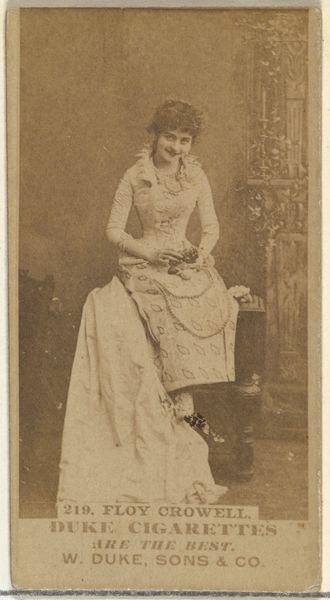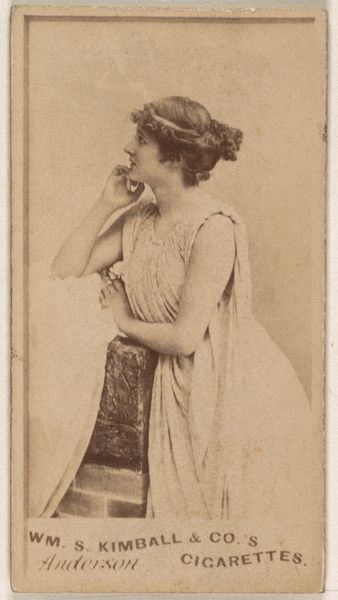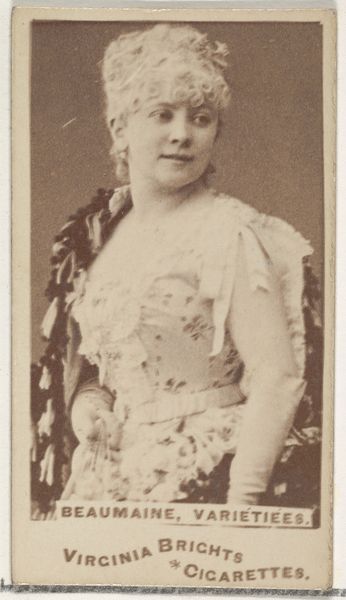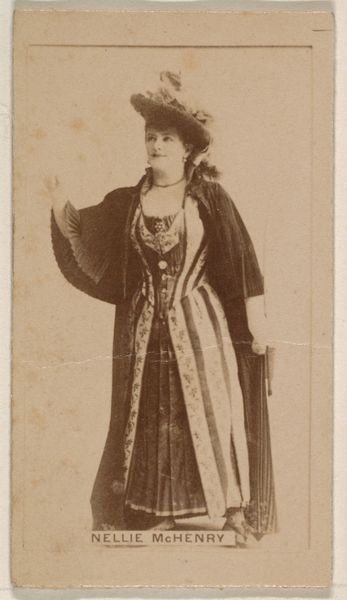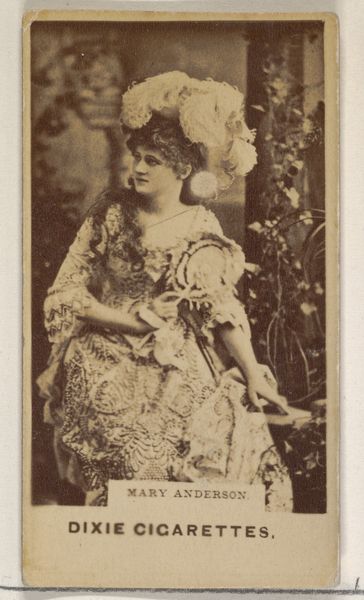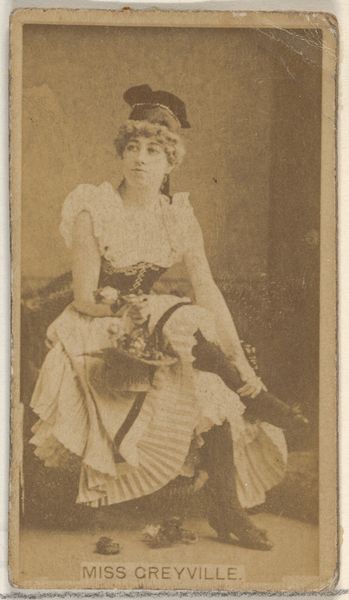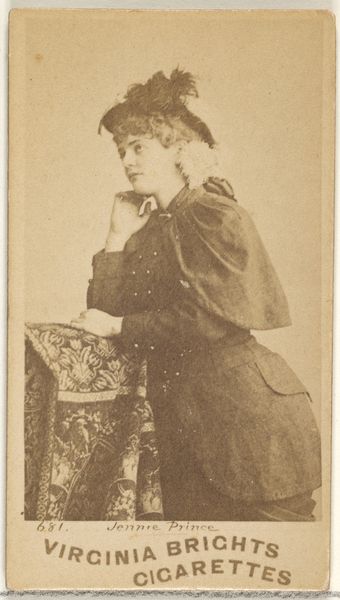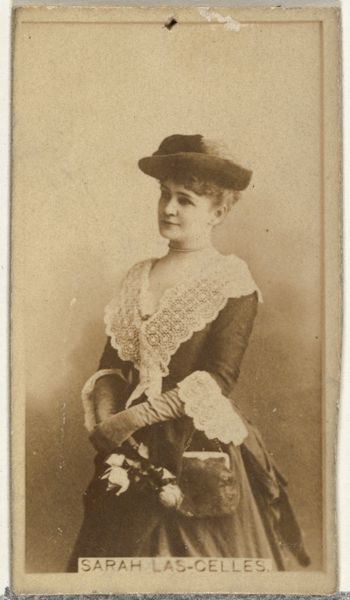
Miss Noblet, from the Actresses series (N203) issued by Wm. S. Kimball & Co. 1889
0:00
0:00
print, photography
#
portrait
#
pictorialism
# print
#
photography
Dimensions: Sheet: 2 5/8 × 1 3/8 in. (6.6 × 3.5 cm)
Copyright: Public Domain
Curator: This charming little image is "Miss Noblet," from the "Actresses" series put out by William S. Kimball & Company in 1889. Editor: It's… curious. I'm immediately struck by its texture, almost velvety in its sepia tones. And it’s so tiny! It’s hard to believe it’s anything more than a humble commercial print. Curator: Precisely! It's a cigarette card. But don't let the mundane origin fool you. Kimball & Co. were aiming for pictorialism here. These cards weren't just for collecting, they were for capturing a certain mood, a certain ideal of feminine beauty associated with the stage. Editor: You can certainly see it in the material of the photographic print and card itself. What type of paper, what kind of inks are employed? Knowing where Kimball sourced these materials and what labor they employed gives a far more complex story of leisure and commercial expansion at the turn of the century. This also tells us of consumption trends; mass media and mass manufacture gave opportunities for new kinds of photographic techniques on the printmaking production line. Curator: Ah, but it is Miss Noblet that intrigues me most; something almost wistful in her gaze, a touch of melancholy clinging to the edges of her costume. Do we even know who she was? To see these long forgotten faces resurface again makes us think how important it is to see things for the sake of just, *seeing.* I can get happily lost imagining how fleeting fame felt like back then for a performer like her. Editor: That "fleeting fame," as you call it, relied on an entire industrial structure – from the paper mill churning out cardstock, to the photographer painstakingly posing Miss Noblet. Those things also help reveal to us more about the role that the artist played in society. Even someone such as Miss Noblet herself who lived at the turn of the century played into the cycle of supply, value, and profit. It seems as though these kinds of productions of fame is an extension to material desire. Curator: Point taken. All the elements point to commerce and aspiration as its essence. Perhaps what seems a nostalgic glimpse is in truth a mirror reflecting the anxieties and aspirations of a rapidly changing era. Editor: Indeed. Looking closely at material production, we begin to understand the machinery, the commercial theater in which these figures move. The materials themselves are worth seeing.
Comments
No comments
Be the first to comment and join the conversation on the ultimate creative platform.



